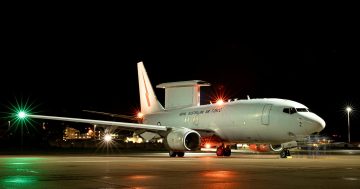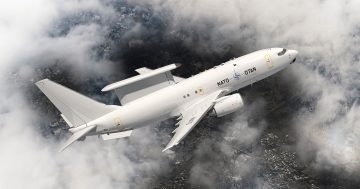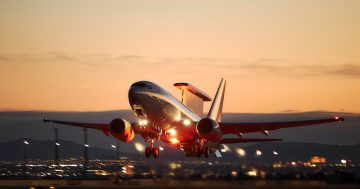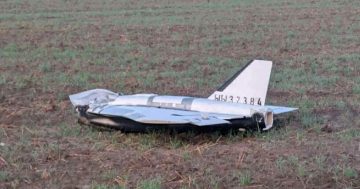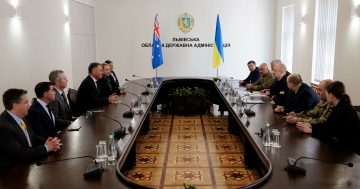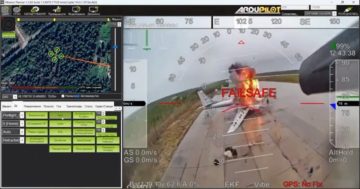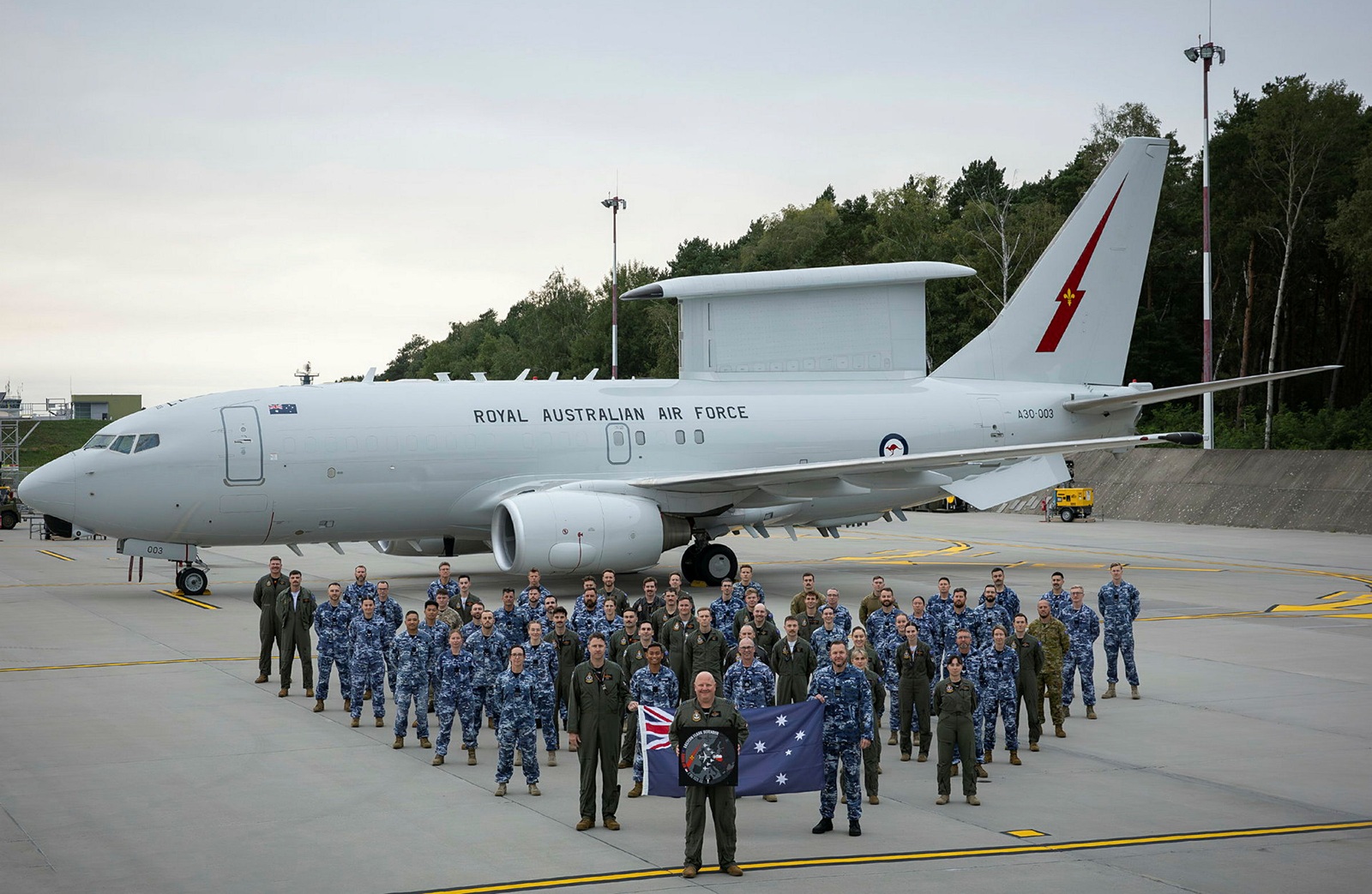
ADF Task Element (TE) 631.10.7 personnel pose with their aircraft in Poland. Photo: ADF.
A Royal Australian Air Force (RAAF) Boeing E-7A Wedgetail airborne early warning and control (AEW&C) aircraft has returned to its home base near Newcastle after a four-month deployment to eastern Europe.
The aircraft was deployed in July under Operation Kudu’s Task Element (TE) 631.10.7 to support NATO efforts to supply weapons and other goods to Ukraine, primarily through eastern Poland.
It was based in Poland and was primarily tasked to monitor the airspace around the borders with Ukraine and Belarus, in particular to watch for any efforts by Russia using combat aircraft or drone attacks to interfere with the supply missions.
This was the second deployment of an RAAF E-7A to eastern Europe, the first being in 2024 based at Ramstein in Germany to US aid flights and to assist Ukrainian air defence operations defending against Russian missile and drone attacks.
The E-7A is based on the commercial Boeing 737-700 airliner but features large ‘surfboard’ antennas on the upper fuselage, and is the most capable AEW&C aircraft in the world. Australia was the lead customer for the aircraft and has six in service with Number 2 Squadron at RAAF Base Williamtown. Turkey, South Korea, the UK, the US and NATO also operate the E-7A or have it on order.
The aircraft has the ability to see small airborne targets from more than 400 km, and its advanced electronically scanned array radar can ‘zoom in’ and ‘stare’ at targets of interest while still being able to continue monitoring the airspace 360 degrees around the aircraft.
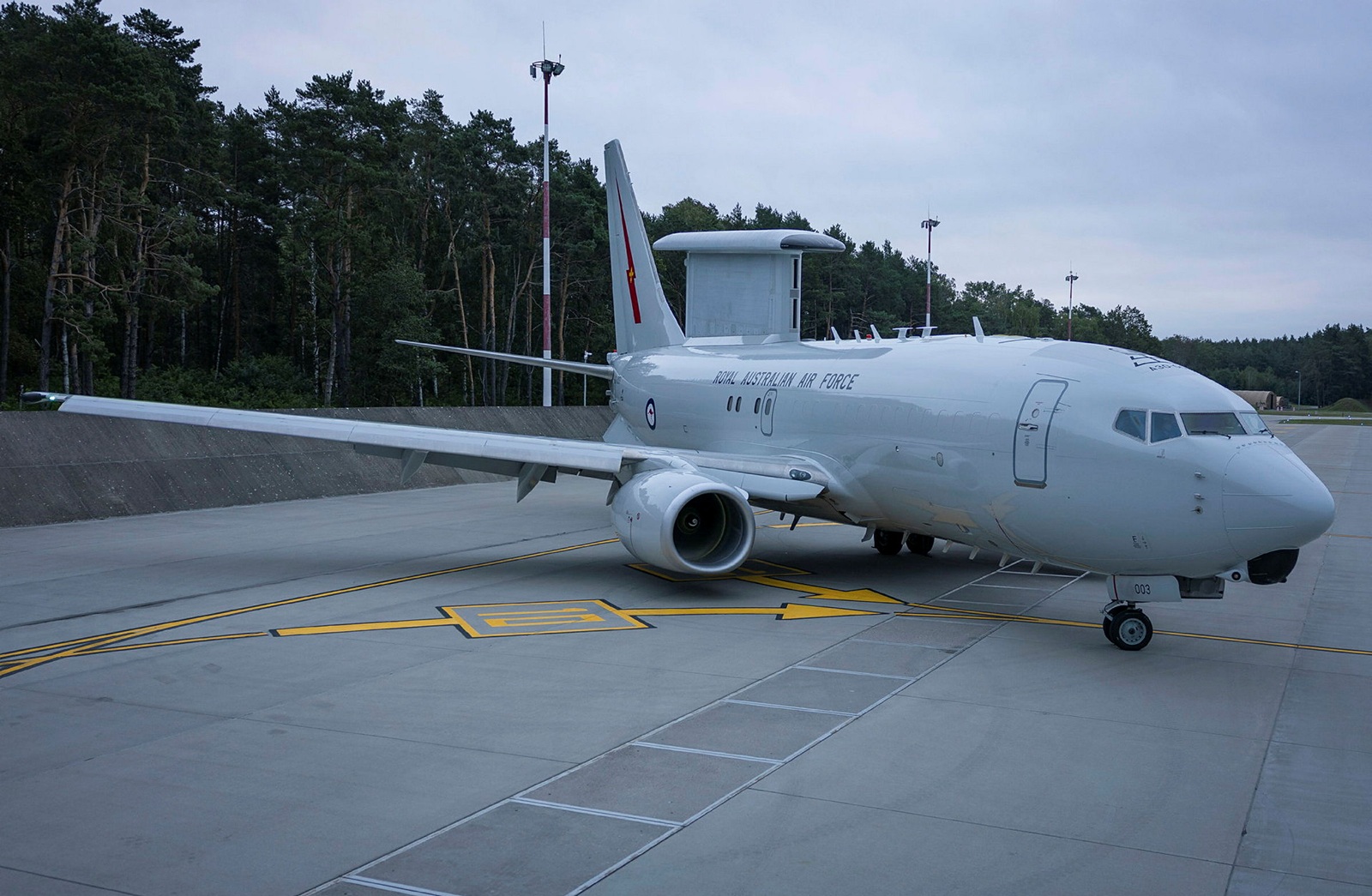
The E-7A taxis in to its base in Poland after a mission. Photo: ADF.
This unique capability served as a deterrent, reducing the risk of Russian strikes on logistics hubs outside Ukraine as part of a multi-layered protection strategy or space-based, airborne, and ground-based sensors and air defence systems.
The deployment was also a valuable exercise and demonstration of Australia’s ability to integrate with NATO and European partners.
The Australian Defence Force’s Chief of Joint Operations Vice Admiral Justin Jones said the personnel deployed under Operation Kudu made an outstanding contribution to supporting Ukraine.
“During the deployment, the E-7A Wedgetail was able to conduct operations and deliver valuable intelligence while seamlessly integrating with our NATO partners,” he said.
“The ADF stands ready to continue our support to Ukraine, under Operation Kudu.”
TE Commander, Wing Commander Samuel Thorpe said the mission’s focus was supporting humanitarian assistance to Ukraine through Poland’s logistics hub, while also supporting NATO’s integrated air and missile defence systems.
“The E-7A is the most sophisticated airborne, command and control platform in the world,” he said.
“It’s highly sought-after and not something NATO has available to it.
“So, it’s no surprise that it came as a request from the Polish and NATO forces, for the TE to come and provide support,” he added.
“We’ve been able to achieve 100 per cent mission success thanks to the technical competence and mission focus of our people.”
Polish Brigadier General Chojnacki said that having the Australians operate the E-7A from a Polish airbase had increased the two nations’ cooperation as well as NATO capabilities.
“The ADF brings a very important role in the surveillance picture for NATO, which has increased our Defence,” he said.
“It extends long-range reconnaissance, providing observation all around our NATO borders.”
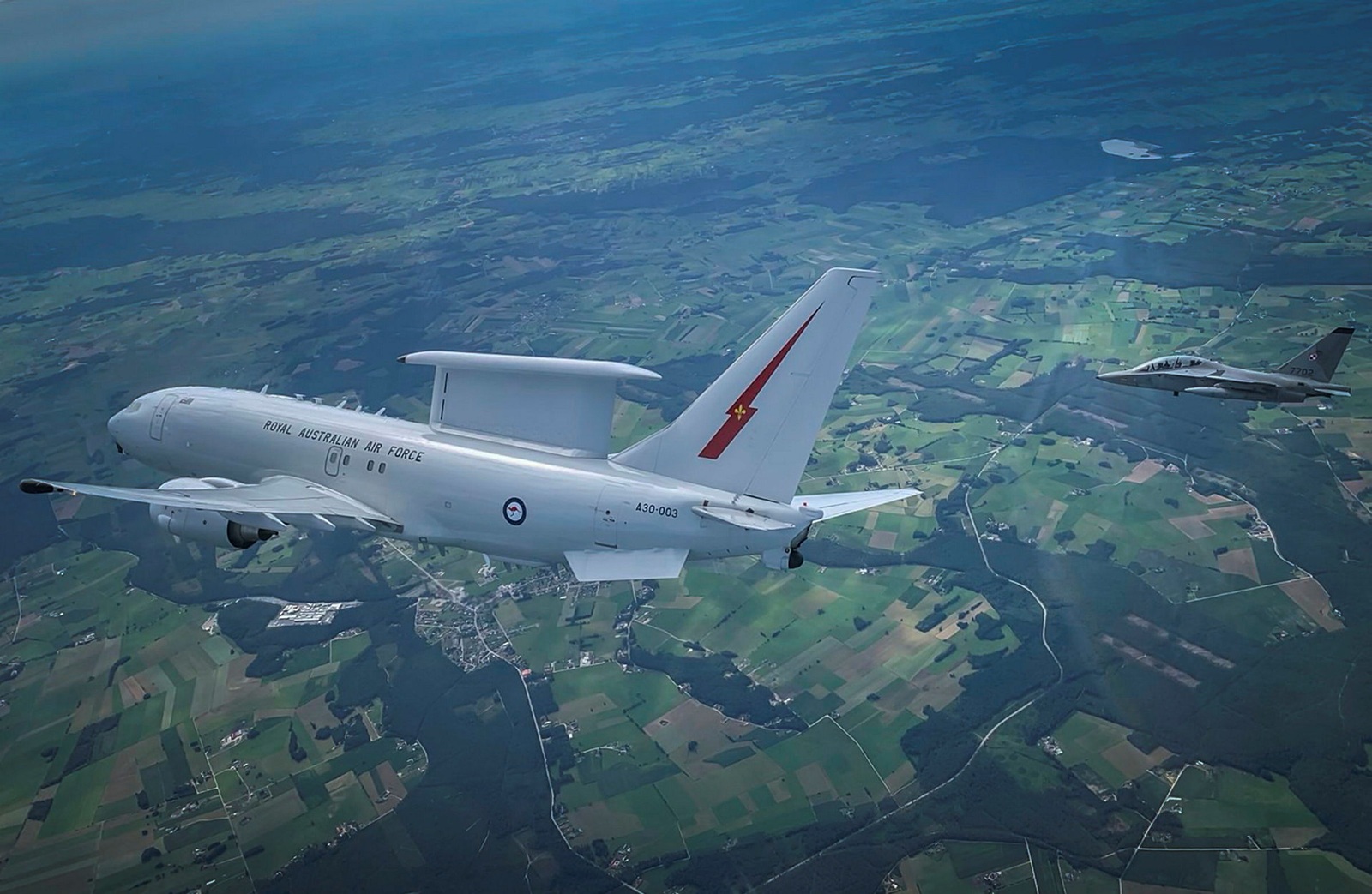
The E-7A participated in Polish national day celebrations alongside Polish Air Force aircraft. Photo: ADF.
NATO Secretary General Mark Rutte praised Australia’s contribution in response to media questions about the deployment.
“This very practical cooperation is really crucial and I highly value that relationship with your proud nation,” he said, adding that NATO working closely with Australia, New Zealand, Japan and South Korea was crucial.
“We acknowledge that the Euro-Atlantic and the Indo-Pacific cannot be seen as two separate theatres — they are combined,” he said.
“With North Korea and China supporting Russia’s war effort, Iran supporting Russia’s war effort — let’s not be naive about it.
“So we have to stand ready. We have to work together. We have to train together … this very practical cooperation is really crucial.”
Australia’s Ambassador to Belgium, General (retd) Angus Campbell, said the Wedgetail crew left with their heads held high.
“The opportunity to be here in Europe to assist as a partner with NATO over the last three months has been extremely valuable for our aircrew, maintenance teams and the planners who formed the capability,” he said.
“This contribution has been deeply appreciated by NATO.”
In total, the E-7A flew 45 missions over eastern Poland during the deployment, and was reportedly airborne when Russian jets violated Estonian airspace in the Baltic Sea last month, and when Russian drones crossed the border into Poland the week before.


